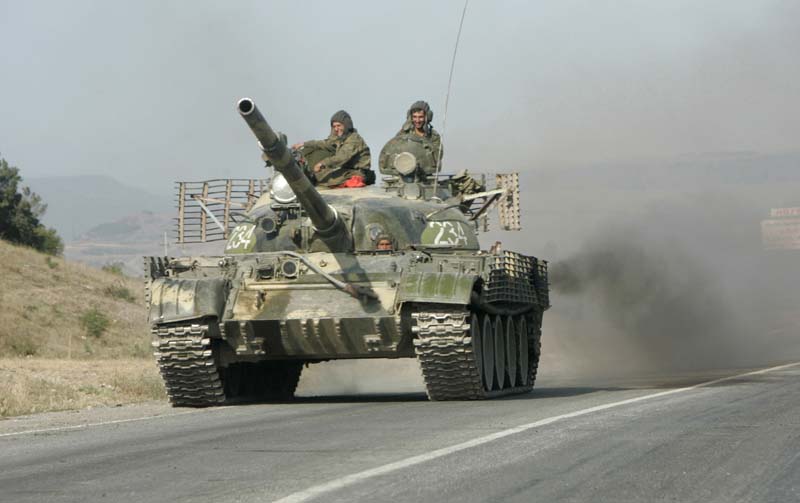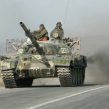
Russian Military Command and Control: A Giant Leap of Faith?
Publication: Eurasia Daily Monitor Volume: 8 Issue: 158
By:

Since the transformation of the Russian armed forces began in October 2008, senior political and military leaders have promised to improve command and control (C2) both in terms of force structure as well as by means of introducing new technology. President Dmitry Medvedev has set the target to “digitize” military communications by 2012, and Defense Minister Anatoliy Serdyukov talks about plans to introduce automated C2 outperforming the existing system by a factor of 3.5. On August 11, Nikolai Radko, the First Deputy Director-General of the joint-stock company “Sozvezdiye,” involved in the design and manufacture of advanced automated C2 systems, presented an optimistic overview on the prospects for the Unified System for Command and Control at the Tactical Level (Yedinaya Avtomatizirovannaya Sistema Upravleniya Takticheskim Zvenom –YeSU TZ). Radko emphasized how pivotal such developments will prove in the pursuit of the Russian version of network-centric warfare, and expressed confidence that Sozvezdiye possesses the required mix of telecommunications and information-based innovative technology, as well as the experience in building large systems (https://www.abireg.ru/print_news.php?idnews=19300, August 11).
The military-industrial commission met in Moscow on July 28 to discuss the deficiencies in the system and downplayed the setbacks, while offering reassurance that these “minor issues” would be resolved by the end of the year. The defense ministry and defense industry are reportedly at loggerheads over its design. “The military is still unable to settle on the algorithms of the digital formulation of objectives for different categories of commanding officers in the organization of combat. The principles of combat employment change constantly here. The analysis of each of them requires time and funds. Especially since the contract for the pilot project was signed only last Friday [July 29],” complained Vadim Potapov, the chief designer of the YeSU TZ (https://www.izvestia.ru/news/496152, August 1). The defense ministry accuses the defense industry of dragging its heels in resolving design issues, while the manufacturers complain that they are not given specific instructions concerning what the military wishes to see on the system’s monitors. Exercises scheduled for October to test the YeSU TZ in the 5th Motorized Rifle Brigade, Alabino, were cancelled as a result of this impasse.
On numerous occasions Army-General Nikolai Makarov, the Chief of the General Staff, has highlighted the crucial nature of automated C2 and promoted network-centric approaches to warfare. In October 2010, Colonel-General Aleksandr Postnikov, the Commander-in-Chief (CINC) of the Ground Forces, stated that the development of automated C2 is a priority for the future of the military. Lieutenant-General Sergey Skokov, Chief of the Main Staff and First Deputy CINC of the Ground Forces (one of the troika of generals that resigned in June 2011) has been closely linked to these initiatives. Also speaking in October 2010, Skokov described how the YeSU TZ could enhance the algorithm of battle management. Decisions by the brigade commander would be transmitted in real time to his battalion commander, displayed on his personal computer. More recently, Colonel Musa Khamzatov, an expert on modern approaches to combat operations and an assistant to General Postnikov told Izvestiya that the General Staff is developing a system of transition from vertical command to a network approach (inter-service and inter-departmental) using automated C2. Like others, Khamzatov believes this will greatly enhance the speed of decision making: “Such a system increases the speed of command and control many times over, the dynamics of combat and the efficiency of engagement of the enemy grow accordingly, and the survivability of one’s own troops is enhanced. Having created such a network, we can prosecute so-called network-centric combat operations” (Izvestiya, August 1; Krasnaya Zvezda, October 28, 2010).
In the fall of 2010, Dmitry Kandaurov, a Moscow-based expert on automated C2 examined some of the design problems afflicting the YeSU TZ in a series of articles in Nezavisimoye Voyennoye Obozreniye. These military-technical articles noted that the critical design challenge confronting the defense industry relates to the high-intensity graphics in the software, and placed these complexities in a wider context of improving the overall efficiency of C2. Yet, by far the most detailed analysis written by Kandaurov appeared on August 3, 2011; this time in Zaftra, but it may well signal a potentially far deeper crisis for the “reform” and “modernization” agenda –even if his findings prove to be only partially correct. Noting the weaknesses of Russian military science, and that the challenges stemming from creating automated C2 systems for combined-arms forces lack any criteria for evaluating their efficiency, Kandaurov assessed existing plans for the YeSU TZ and found them entirely flawed (https://www.zavtra.ru/cgi/veil/data/zavtra/11/924/print41.html, August 3).
Reminding his readers that the main requirements placed on any system of C2 are efficiency, continuity, stability and concealment, the author assessed the YeSU TZ compared with the existing “non-automated” system and attempted to unravel the implications and merits of the high-tech version. Turning his focus to measuring the efficiency of the automated system, compared to its manual-input counterpart, the author explained the processes involved in the use of situational data in terms of gathering, collecting, processing, displaying, synthesizing, analyzing and transmitting such information. This is where the importance of the software being used in the system is graphic-dependent: “Up to 90 percent of all information coming to the staff can and should be represented specifically in the form of tactical symbols plotted on a map. In the course of carrying out any information task, from 60 percent to 80 percent of the work of appointed persons goes specifically to the process of displaying information (visualizing the tactical situation on the map)” (https://www.zavtra.ru/cgi/veil/data/zavtra/11/924/print41.html, August 3).
Kandaurov then explains that depending on the exact type of combat, and version of his decision, the brigade commander’s map may display between 1,500 to 2,500 tactical symbols. He notes that in May 2011, state tests of the YeSU TZ showed that plotting one tactical symbol requires on average 18 to 20 seconds. Consequently, the required number of man-hours to display the total number of tactical symbols on the brigade commander’s map is between 7.5 to 12.5 hours. Considering a ratio of 1:3 for the time required to select and edit the symbol, suggests a total of 30 man-hours involved in fully formulating the brigade commander’s decision. Kandaurov notes that “The overall time will be reduced somewhat in view of the fact that the work will be done by several appointed persons, each of whom will work in his own stratum (with subsequent information exchange),” and factoring this into his calculation, he concludes: “Based on the above it follows that it will take around 20 hours just for a complete display of the brigade commander’s decision on the electronic map using software developed in the Sozvezdiye concern. Which is double the standard established for the ‘manual’ method of C2!” (https://www.zavtra.ru/cgi/veil/data/zavtra/11/924/print41.html, August 3).
Kandaurov’s analysis may appear overly military-technical, but it raises significant issues confronting the defense ministry, General Staff and the defense industry: will the existing plans for introducing automated C2 actually result in any improvement of overall efficiency? At an estimated cost 8 billion rubles ($273 million) to equip one brigade, such fundamental questions must be resolved before it is too late.




